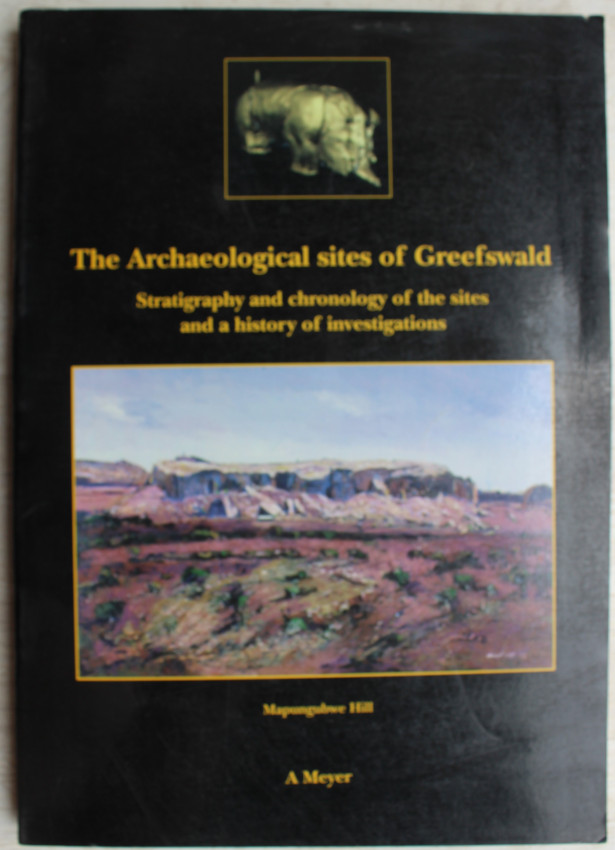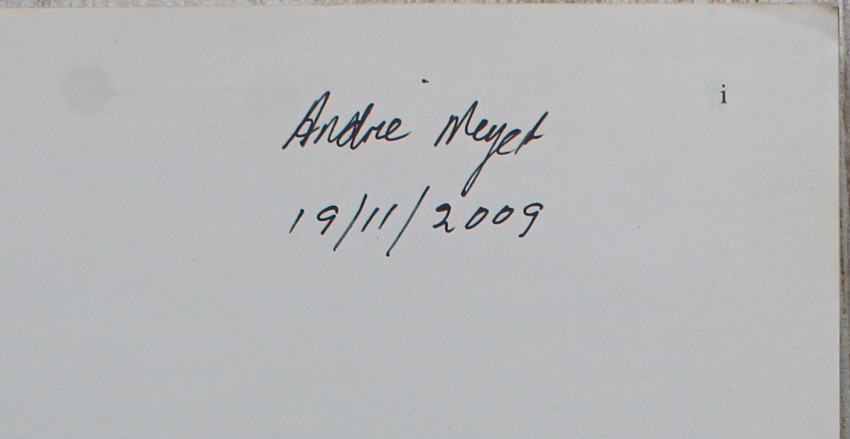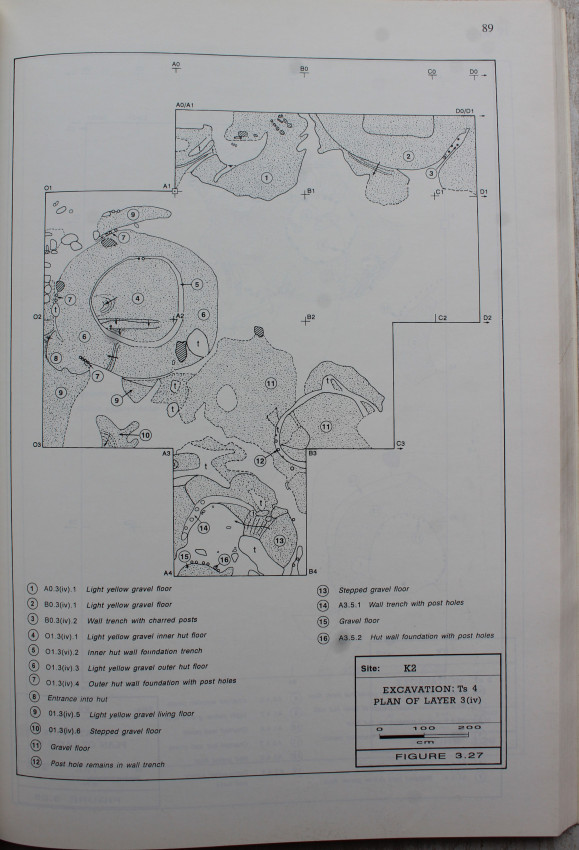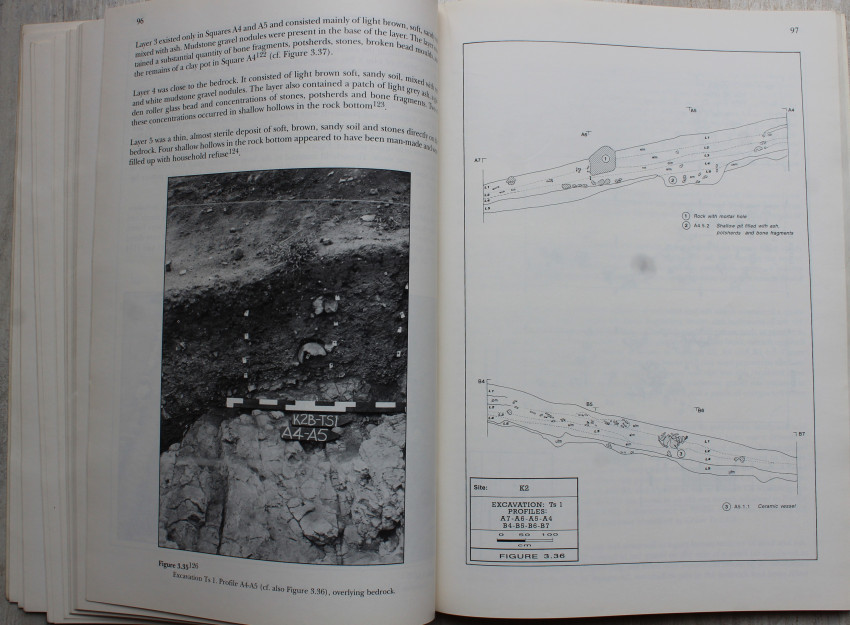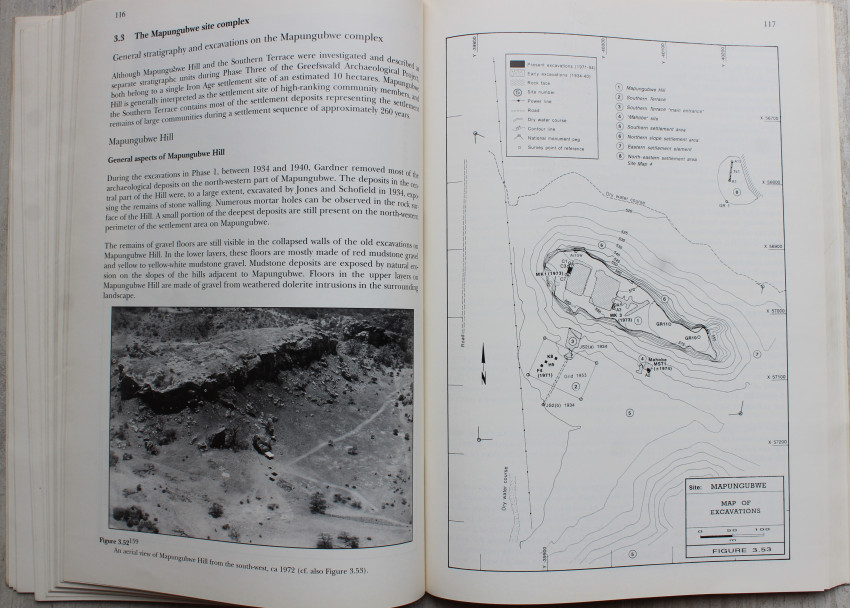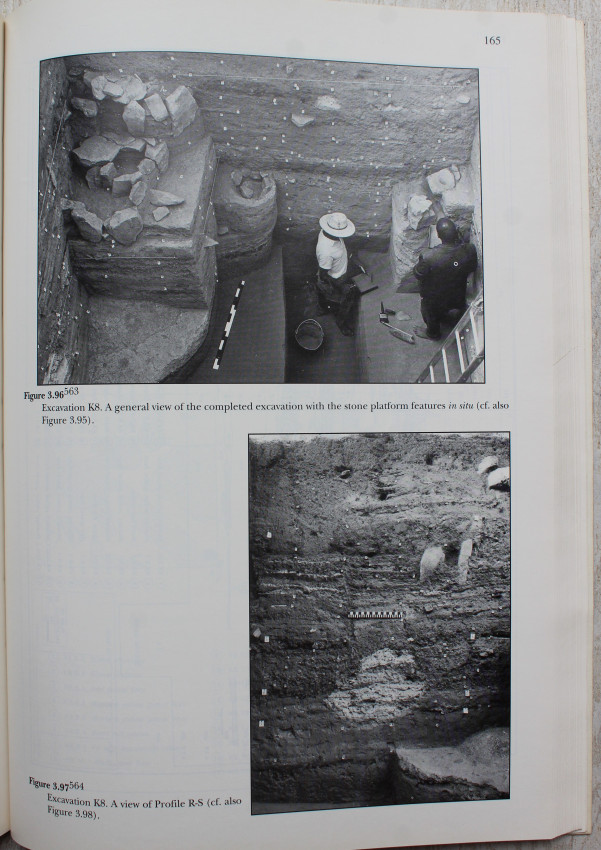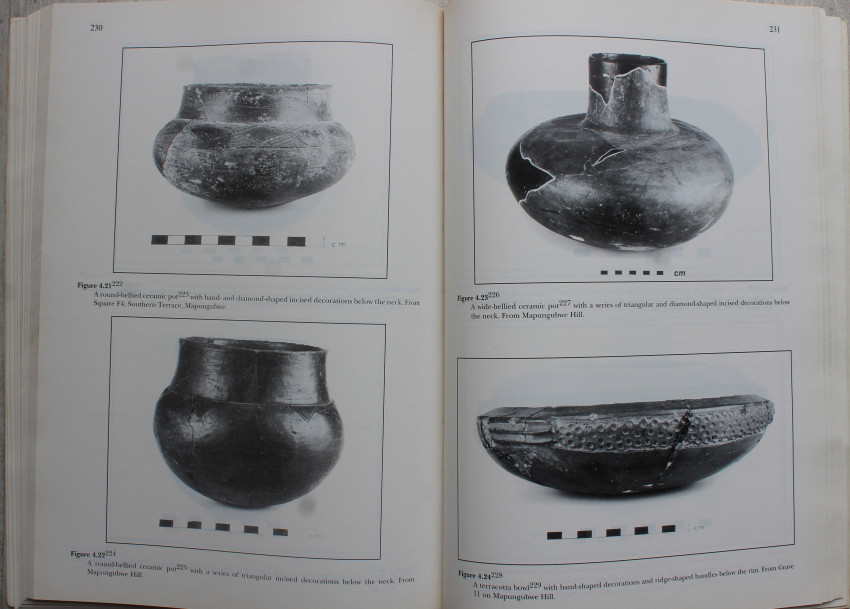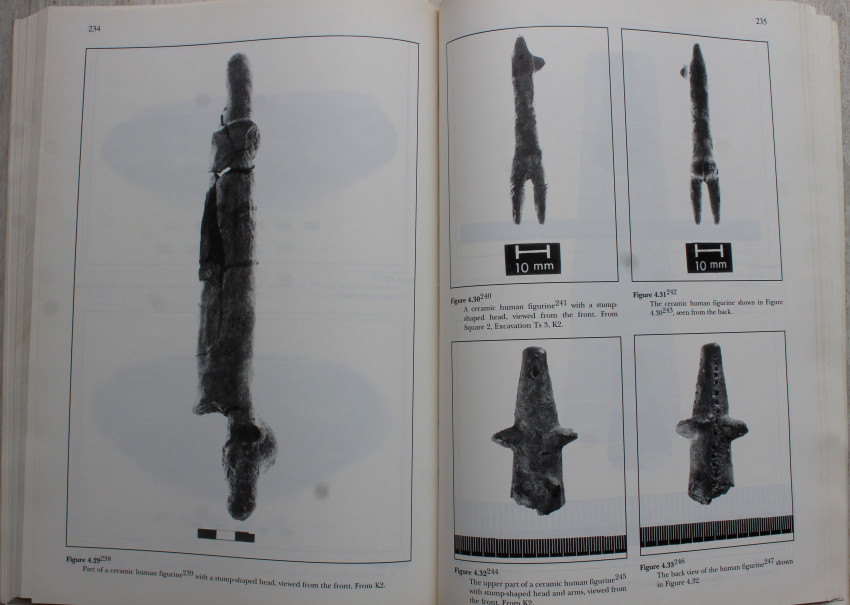Black pictorial carton covers, xxiv & 306 pages, black & white pictures, maps, illustrations. Signed by Meyer on the title page, dated 19/11/2009. A good, clean copy.
The cover picture is an oil painting of Mapungubwe Hill by Nico Roos, 1996.
The metropolis today known as Mapungubwe, on the southern bank of the Limpopo, declined during the thirteenth century, and it disappeared from the annals of the mainstream of the history of Southern Africa for many centuries thereafter. Periodically, small groups of people settled in the area, but the world heard nothing more of a community whose political and economic sphere of influence had reached as far as the east coast of Africa. It was to be seven centuries before this community found its rightful place in history. Mapungubwe came to the attention of the world again in the same way as many other archaeological areas and early civilisations in other parts of the world did - there was a phase of legend and tales about the erstwhile capital, followed by secretive visits by fortune hunters, and eventually by the arrival of scientific researchers with a scientific mission. Mapungubwe was discovered in the early l 930's on the farm Greefswald. Researchers operating under the auspices of the University of Pretoria began excavations to illuminate the remains of a vanished culture. Graves with golden beads and other gold objects, the remains of dwellings and stone walls and unfamiliar glass beads - these led to much speculation and many romantic notions. The archaeologists and ethnologists on the project, however, attempted a more considered and balanced interpretation of the finds. The researchers of the l 930's deserve praise for their pioneering work. They worked under difficult and unhealthy circumstances, they had to operate with inadequate funding, and the rapid turnover of people involved meant that continuity was impossible. They deserve thanks for the vast task they undertook. Nevertheless, we must admit that, by modern standards, their research reports were somewhat lacking in precision. This is not the place to criticise earlier research, especially since these early researchers operated at a time when standards and guidelines for the study of Iron Age remains did not yet exist. Furthermore, these researchers were so impressed by the gold objects and glass beads found in the graves that they were eager to find more exotic cultural goods of similar value. Consequently, the excavations were done in haste, and stratification and other features in the deposits were not accurately recorded. Further research was only possible after World War II. In the early 1950's, a decision was taken to resume excavations on a limited scale. The primary aim was to determine the stratigraphy, chronology and cultural content of the deposits by means of systematic excavation and accurate documentation. Although the field work was completed over only two seasons, this research phase marked the beginning of methodical and accurate field work and accurate documenting.
(https://repository.up.ac.za/handle/2263/85017?show)
- Binding Condition: Good
- Overall Condition: Good
- Size: 21 x 30 cm
- Sold By: Mantis Books
- Contact Person: Charl Yates
- Country: South Africa
- Email: [email protected]
- Telephone: 0833219905
- Preferred Payment Methods: EFT & Paypal
- Trade Associations: AA Approved


